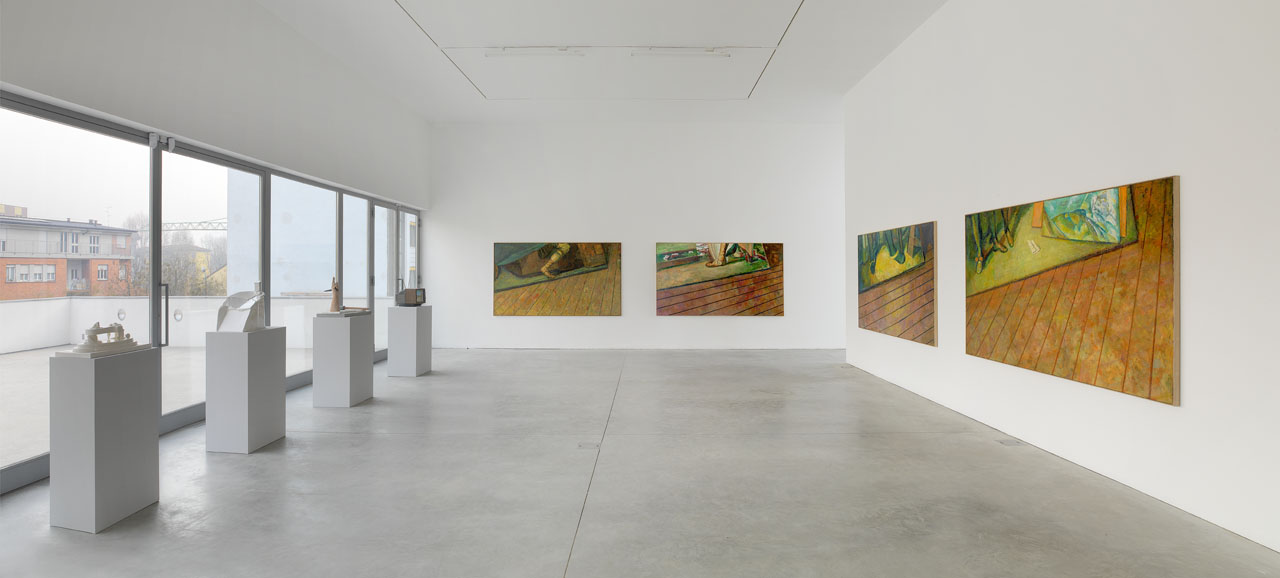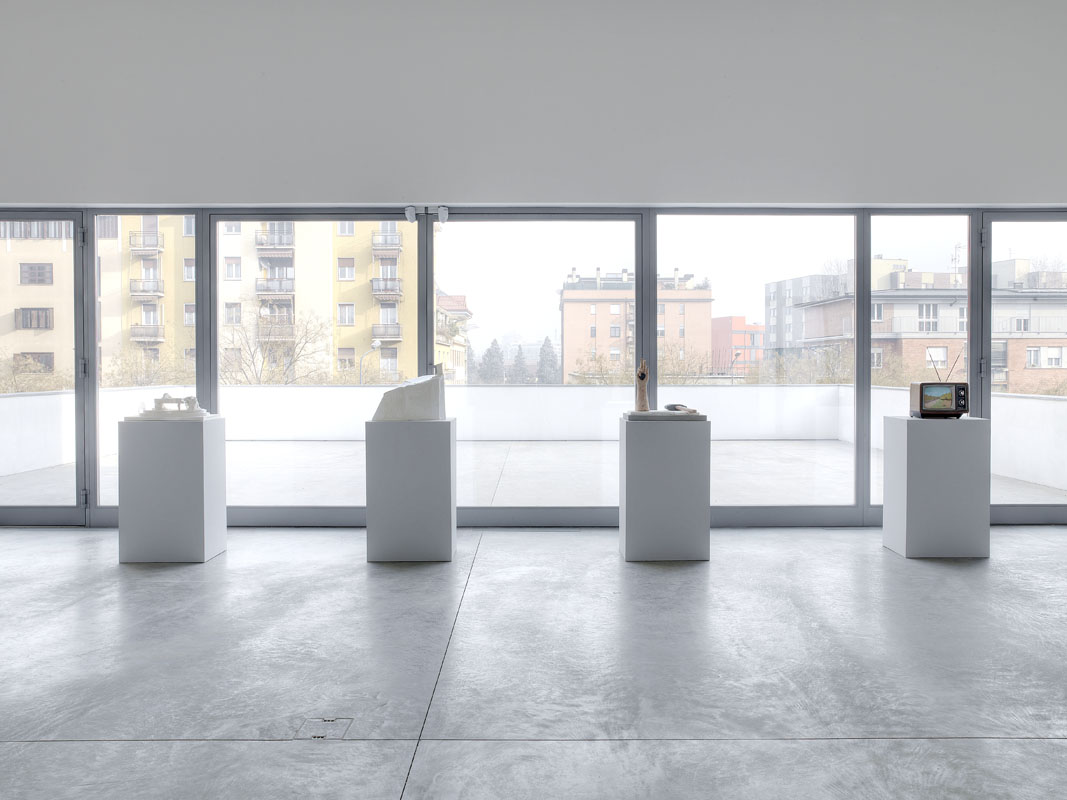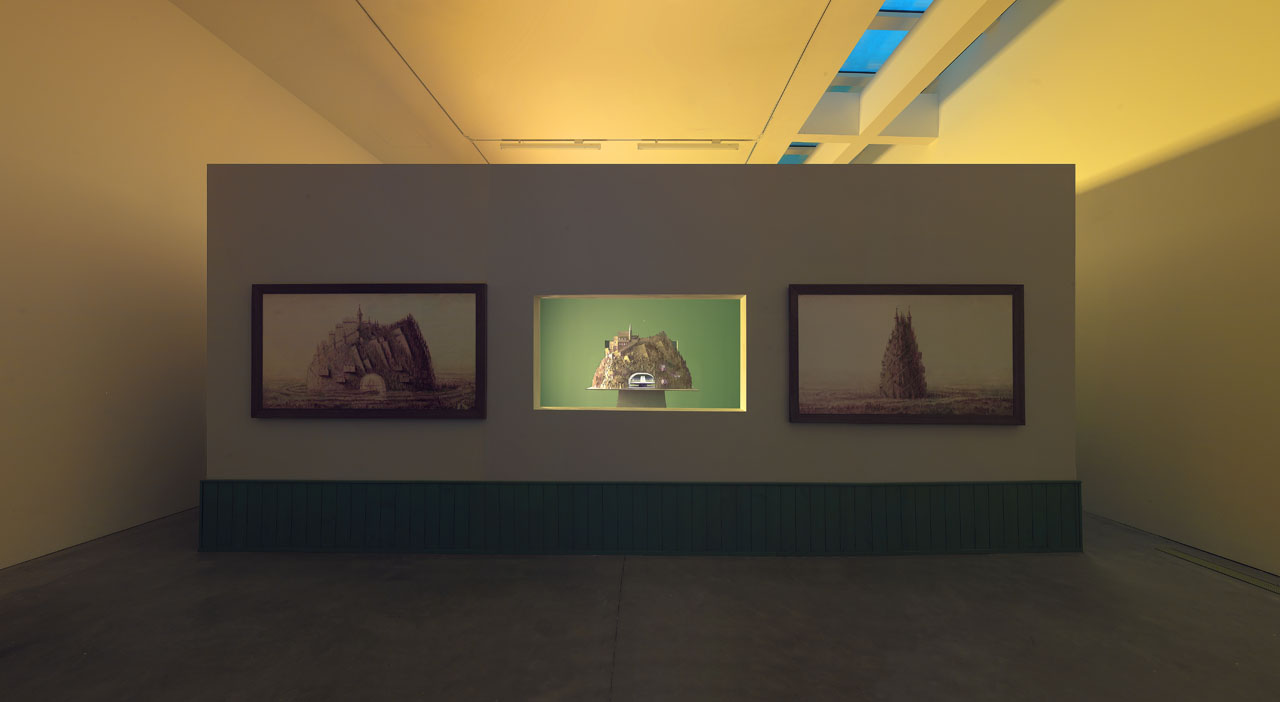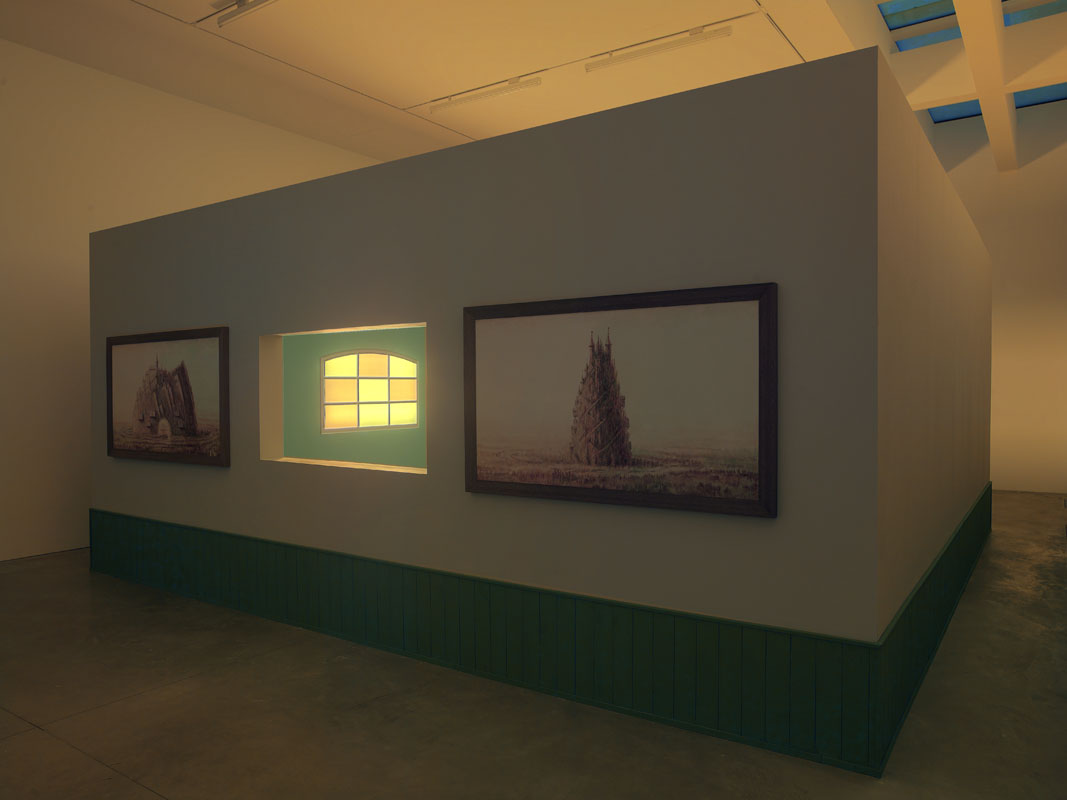The Lia Rumma Gallery is delighted to announce the two-person show of the works of Ilya & Emilia Kabakov at the gallery’s premises in Milan. A few years after their last show, the gallery presents an anthological exhibition of the works linked to the most interesting cycles of the work of Ilya & Emilia Kabakov. Paintings, installations and sculptures as well as drawings and models document an artistic practice that has constantly made use of the whole range of art media over the years.
On the ground floor, Someone is Crawling under the Carpet is a monumental installation which is on display for the first time in Italy and was made in 1998 for the retrospective exhibition at the Museum van Hendendaagse Kunst in Antwerp. Using the poetic device of concealment, and employing a mechanism to simulate the features and circular movement of a man beneath a large carpet, the artist stirs the imagination of the viewer, arousing curiosity and raising expectations.
The foreground is devoted to paintings taken from the series In the Studio of Totti Kvirini. Kabakov’s paintings, steeped in reflections on the end of the theoretical universe of Modernism, with the ideologies and values of which it was the bearer, are linked to the identification of an alter ego as in the case of the project Life and Creativity of Charles Rosenthal, done in 2000. Painting is exemplified by the practice of the artist who retreats from the clamour of life to his studio to paint, his role in society, and the memory of the time to which the alter ego belonged, all elements which weave a tight network of relations created by concealed references. The painting seems to have an aura that refers to something intangible which the painted representation on its own does not express.
The sculptures and drawings in the display cases at the centre of the room reveal an artistic practice which is not content to use a specific medium but exploits all the possible instruments available for artistic creation. A
sophisticated example is the ceramic piece entitled The Pianist and Muse (2000) which portrays an exhausted pianist immersed in the pathos of creation at all costs.
The fascination with fairy tales and story-telling are the themes of the large installation on display on the second floor. Evening is one of three parts of the impressive installation Morning, Evening, Night… made for the twoperson show (H.C.Andersen. A Lifeword, 2005) with Joseph Kosuth at the Nikolaj Contemporary Art Center in Copenhagen. The actual structure of the installation runs through the narrative forms of the fairy tale and is constructed like a series of Chinese boxes. A room has been built within the exhibition area; within the room, a window simulates the source of natural light that illuminates the enchanted mountain containing a music box. On the walls there are large paintings which portray the model of the mountain on display from the inside. The viewer cannot cross the room, but can look inside through two windows placed at the front and the back. The paintings depict the mountain from the vantage point of the viewer but on closer inspection, besides recognising the imaginary world of Andersen that inspires the work, a clear difference emerges between the observed image of reality and its painted representation. Like the other installations in the exhibition, Evening places the viewer in a dream-like atmosphere typical of the fairy tales of Northern Europe.
Mostra personale
Ilya and Emilia Kabakov
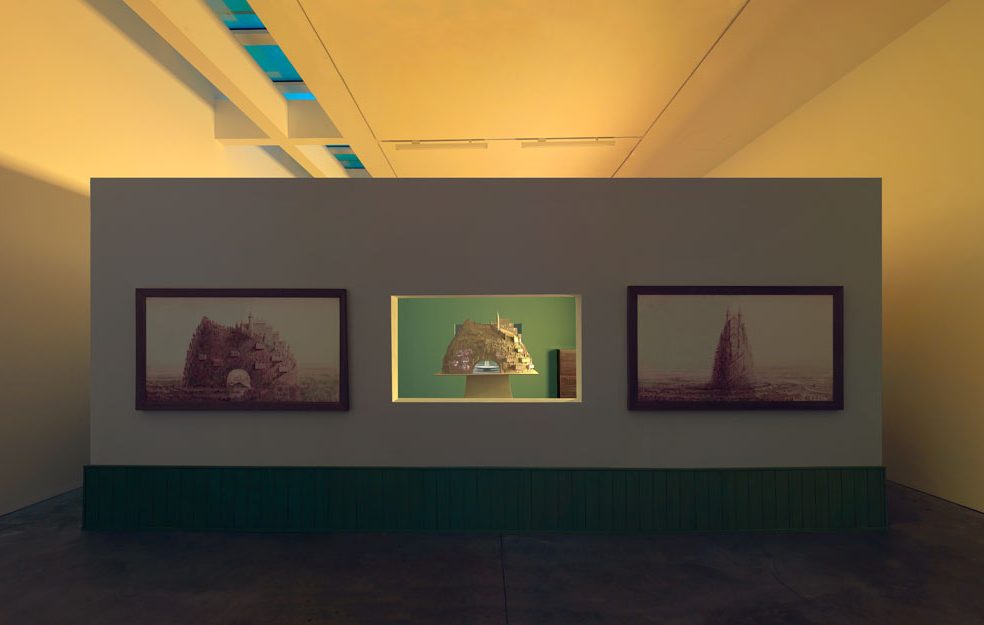
Photo Gallery
L'artista
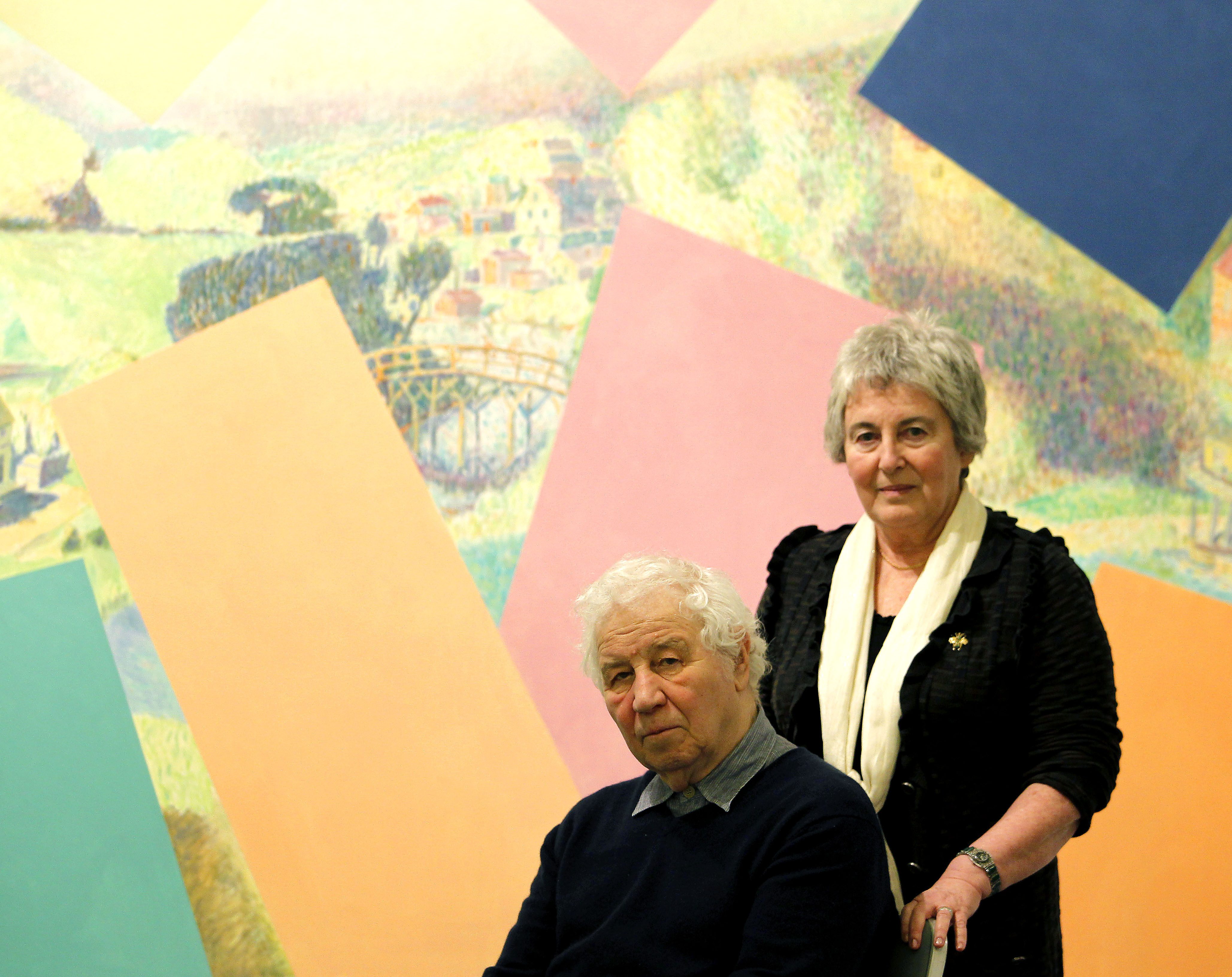
Ilya and Emilia Kabakov are Ukraine-born, American-based artists that collaborate on environments which fuse elements of the everyday with those of the conceptual. While their work is deeply rooted in the Soviet social and cultural context in which the Kabakovs came of age, their work still attains a universal significance.



